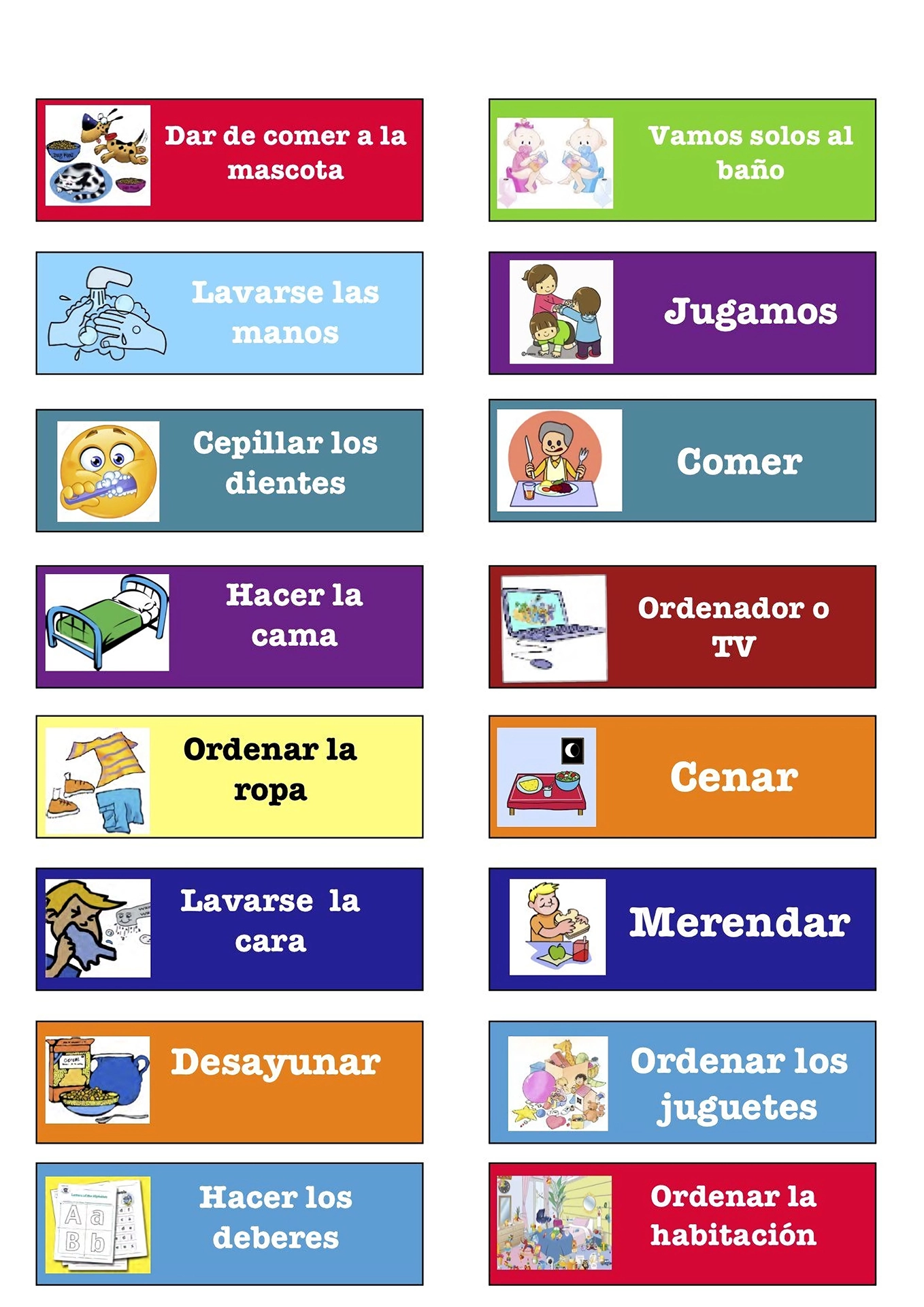One of the biggest conflicts observed between parents and children is to set daily routines at home, the Montessori proposal is to bring the proposal of routine tables to our home.
One of the biggest conflicts that is observed between parents and children is that of establishing daily household routines such as cleaning the room, tidying up toys, brushing, grooming, doing homework, etc. Adults do all these activities automatically, all children, but our children must still learn to carry them out without resistance. For this, there are many homes that put into practice the table of routines proposed by the Montessori method.
Why do children need routines?
What is the reason for this resistance or 'rebelliousness' in the face of the different daily tasks that have to be done? The answer is very easy: young children do not have the ability to carry out activities automatically, despite the fact that they do them every day, since this demands a mental organization that they have not yet developed. And to achieve it, you must have perpetual daily guidance from parents.
At this point, the way in which we address these parcels will develop openness or resistance on the part of the children, when spoken with an authoritarian and even threatening tone, they can "rebel against the system." Given this circumstance, what is the solution? Try to invite the little ones to connect with their routine.
Visual Tools
María Montessori was perfectly aware of this involuntary difficulty on the part of children and the negative responses it provoked in their parents. For this reason, he attached significant importance to creating visual tools that served as a reference so that the little ones could do things correctly. It is at this point that we must talk about the Montessori routine table.
Routine board for children
The table of routines, to this day, continues to be an excellent material use by María Montessori. This consists of a series of simple images with children's designs that clearly and explanatoryly show how the daily routine should be, from the moment your child gets up until he falls asleep. Also Known As 'Routine exhibitor'.

In this way, the little ones can be guided and anticipate what follows after each activity, without the need to ask. This greatly helps to form responsibility, autonomy, retention capacity and problem solving, memory and attention.
For example: If your boy or girl wants to go directly to play or watch television when they get up or when they get home from school, instead of scolding or punishing them, you invite them to review the routine table for that day together, since you are including him to be a part of it.
How to create the Montessori routine chart for each family member
On the wall near your child's bed, you must place a table (better if it is made of any natural material) and place a series of images that are presented as the routine display, among which are:
– At the beginning of the day: Wake up, wash your face, brush, get dressed, tidy the bed, greet mom and dad, have breakfast, go to school (or do another activity depending on your class schedule).
– At the end of the day: Greet mom and dad again, order the books, check homework, take a bath, have dinner, save materials for the next day, etc.
You can customize these activities according to your habits and the age of your children.
As a reference, you can take the images that we propose above, but you can also draw them yourself. In this way, you will get the main character in the routine table to resemble your son or daughter as much as possible and, therefore, feel more identified with him or her. You can also involve your children in the design and creation of these while you explain their importance, in the same way a table for dad or mom will help children understand the way in which each member of the family has their tasks or routines to fulfill .
Final Tips for Making Routines Work
Of course, a key element in making the routine chart work is parental involvement in it, as the cards alone will not create a satisfying routine for you and your children. It is important that you make them participate in the use of said table and even when you are placing the exhibitors on it, explaining its meaning as a representation of the day to day that they will now follow.
But it is also important to show firmness in making your son or daughter complete the assigned tasks. So you can apply the consequence and reward system (praise when he complies and give him a consequence if he doesn't) as well as negotiations to establish a positive balance between teaching responsibility and enforcing your role as a parent.
Information obtained from Children's Guide. View Original
